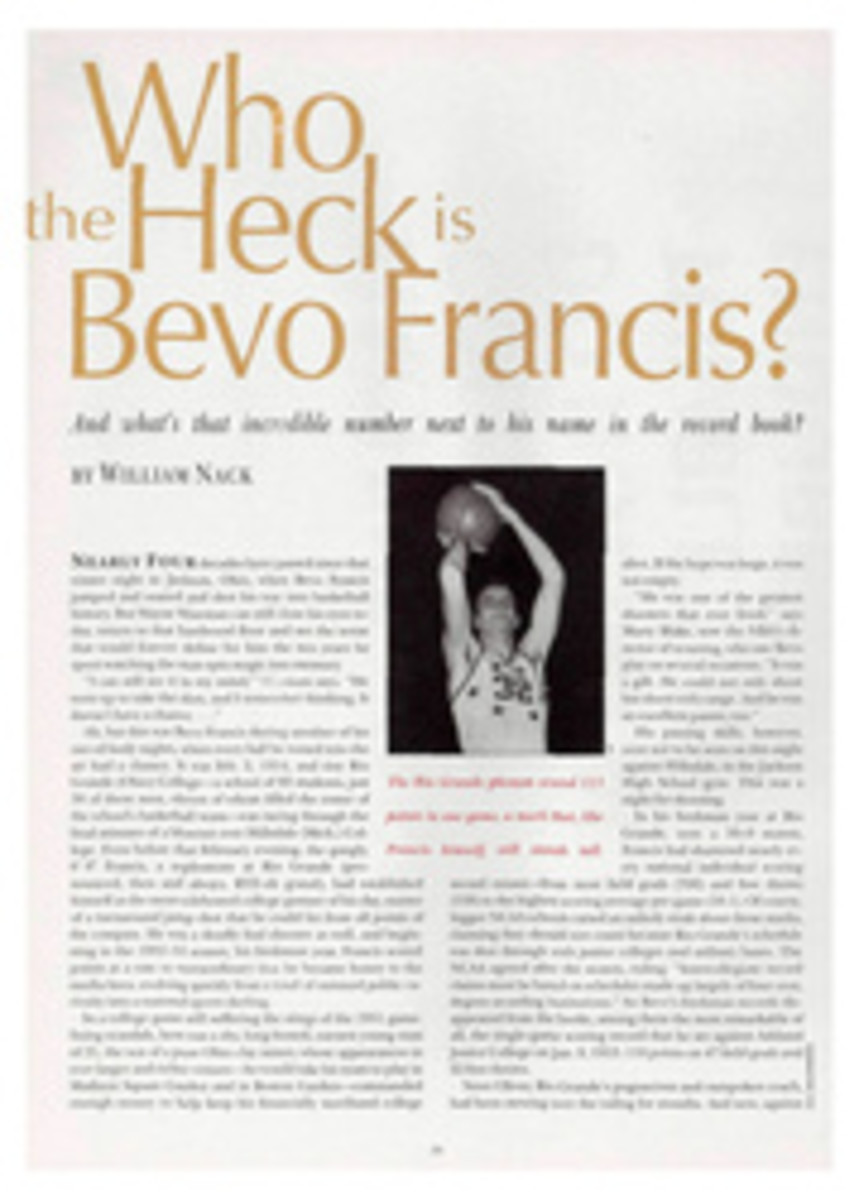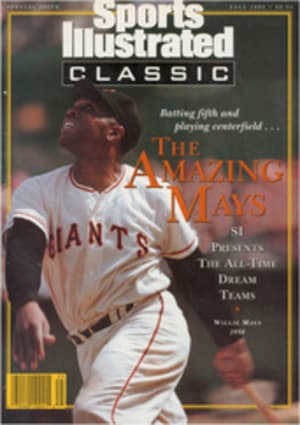
'THE BEST I EVER RODE'
A few years ago in Lexington, Ky., some of horse racing's elite waged a cocktail-party debate over who was the best racehorse ever to wear a bridle. Naturally somebody mentioned Man o' War, whose dominance in 1919 and '20 took on mythic proportions. Jimmy Jones made the case for Citation, the 1948 Triple Crown winner he trained for Calumet Farms. The boosters for Secretariat, the '73 Triple Crown winner, were led by his owner, Helen (Penny) Tweedy. Finally Woody Stephens, trainer of five straight Belmont Stakes winners in the 1980s, laughed and said, "You're all forgetting one of the best I ever saw. What about Count Fleet?"
Indeed, next spring will be the 50th anniversary of Count Fleet's Triple Crown, and surely he deserves mention in any conversation about the sport's immortals. Or does he? "I don't think so," says Jones, now 85. "When he won the Triple Crown, it wasn't a tough year. As the year went on, he got better and everyone else got worse. The horses he beat couldn't have won a good allowance race."
Jockey Eddie Arcaro, who rode Citation, disagrees. "That happens with great horses," he says. "Once they get to beating horses, they make it look easy. Who did Citation beat? Who did Secretariat beat? Don't let anybody kid you. Count Fleet was an extraordinary horse."
It was at Belmont Park in the spring of' 42 that jockey Johnny Longden first noticed the potential of Count Fleet, a temperamental, slightly built, almost effeminate 2-year-old son of 1928 Kentucky Derby winner Reigh Count, out of the undistinguished Quickly. Count Fleet's owner was John D. Hertz, the rental-car and Yellow Cab magnate (his horses raced in black-and-yellow silks, of course), and Longden was the contract rider for Hertz's stable. Hertz was about to sell the fractious colt for $4,500 when Longden objected. "He loves to run," Longden argued.
"The colt is dangerous," replied Hertz.
"I'm not afraid of him," Longden said.
"All right," said Hertz. "If you're game to ride him, I'll keep him."
Six months later Count Fleet, trained by Don Cameron, covered six furlongs in a Belmont Park workout in 1:08⅖ a second faster than the track record.
The Count had 12 wins in 17 starts heading into the 1943 Kentucky Derby. Because that Churchill Downs crowd consisted mainly of Louisville residents and soldiers from nearby Fort Knox—the usual Derby patrons were deterred by wartime gasoline shortages and travel restrictions—it was dubbed the Streetcar Derby. Count Fleet went off at 1-2 odds, the shortest in the race's history, and Longden drew off to an easy three-length win in the slow time of 2:04 for the mile and a quarter. At the Preakness the Count had only three challengers and won by eight lengths. At 3-20, paying $2.30 for $2, he was the shortest-priced winner ever in the race.
For the Belmont, the third leg of the Crown, his odds tumbled to 1-20, the legal minimum payoff at the time. With the race such a mismatch, the Count's camp let the word out that he would be going for a track record. He finished in a Belmont Stakes-record 2:28[1/5] and a stunning 25 lengths ahead of Fairy Manhurst.
But there was bad news at Belmont. In crossing the point where the starting chute for shorter races intersected with the main track, the colt had taken a bad step. "I was starting to ease him up," Longden recalls, "but the further he went, the further he got ahead." As the colt was being cooled out that night, it was discovered that he had bowed a tendon. He never raced again.
Arcaro still denounces Longden's judgment that day. "It's too bad he [Count Fleet] didn't last longer, but I blame Longden for that," Arcaro says. "The dumb s.o.b. let him win by 30. All he had to do was wrap him up and let him win by five, and then he might have had some horse left. But they wanted to break a track record with him. If he had been able to run as a 4-year-old, he might be recognized today as the greatest ever."
Longden, now 85, lives in Banning, Calif., and he has neither regrets nor doubts about that Belmont ride. As he recalls Count Fleet, it's as if he is aboard the colt and galloping ahead of the pack, daring someone to catch them and knowing no one can. "He was the best horse I ever rode," says Longden, who won 6,032 races between 1927 and '66. "The best I ever saw. He could win at any distance, on any kind of a track. Nobody really knew how good he was outside of myself, and even I don't know. I never touched him with the whip."
PHOTO
UPI/BETTMANN
With Longden aboard, Count Fleet sat pretty after the Preakness.
AND THE COUNT IS IN
Where does Count Fleet rank among the greatest horses in racing history? According to our panel of experts,* he finishes fifth, by a nose. Here's the Top 10 (with career starts, first-, second-, third-place finishes).
1. MAN O' WAR
chestnut colt, 1919-20 21-20-1-0
2. SECRETARIAT
chestnut colt, 1972-73 21-16-3-1
3. CITATION
bay colt, 1947-48; 1950-51 45-32-10-2
4. KELSO
dark bay gelding, 1959-66 63-39-12-2
5. COUNT FLEET
brown colt, 1942-43 21-16-4-1
6. SYSONBY
bay colt, 1904-05 15-14-0-1
7. NATIVE DANCER
gray colt, 1952-54 22-21-1-0
8. NASHUA
bay colt, 1954-56 30-22-4-1
9. SEATTLE SLEW
dark bay colt, 1976-78 17-14-2-0
10. COLIN
brown colt, 1907-08 15-15-0-0
*The panel: Joe Hirsch, executive columnist, Daily Racing Form; Woody Stephens, thoroughbred trainer for more than 50 years; Jim McKay, broadcaster, ABC Sports; Jim Bolus, secretary-treasurer. National Turf Writers Association; Frank E. Kilroe, retired California racing official; Tommy Trotter, Arlington International Race Course steward; and William F. Reed, turf writer for 28 years.

